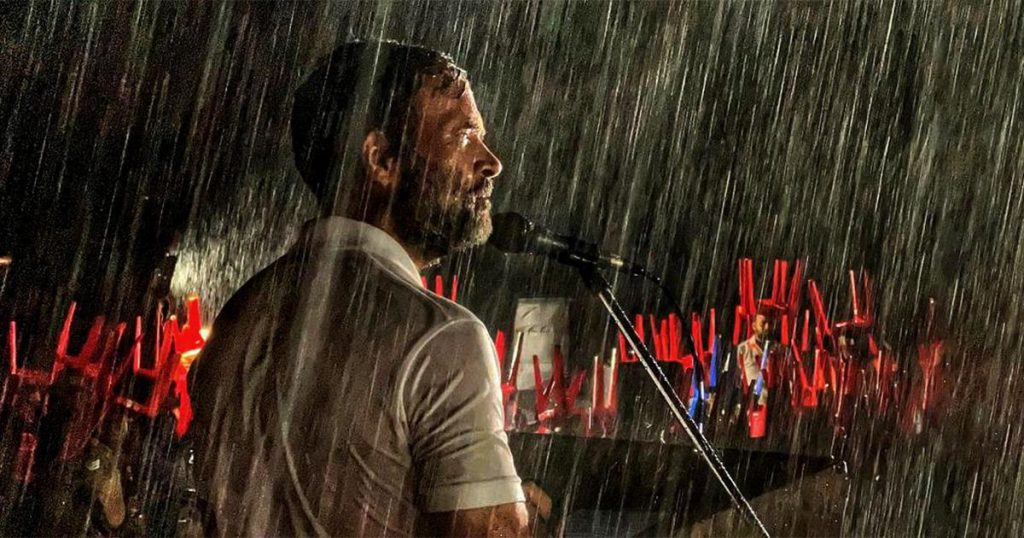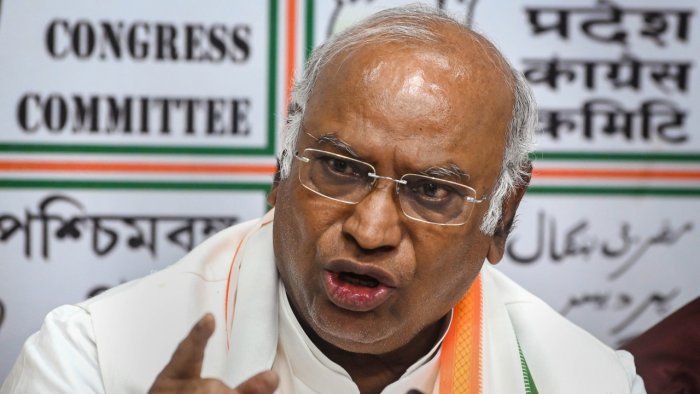Recalling A tale of two cities, “It is the best of times and the worst of times”. For the Indian National Congress, certainties are the inclination to worst. In his resignation letter to Sonia Gandhi, Ghulam Nabi Azad wrote; “The Congress has lost both the will and the ability under the tutelage of the coterie that runs the AICC to fight for what is right for India”, he pointed at a larger trend that has become increasingly evident in the grand old party with each election that has passed by since the 1980s. A trend that has reduced the fabric of the party even in the opposition space today.
Thus seeking its revival in the Bharat Jodo Yatra, with the aim of uniting India, Congress is attempting to make a ripple effect not only across the nation but also within the party fabric. At the time of writing the Bharat Jodo Yatra had finished 65 days on the ground and was moving north towards Vindhya, sustaining various blows from the BJP and other political critics. To ensure the success of Rahul Gandhi’s Bharat Jodo Yatra, the whole organizational structure and communication system of the Congress have been operating around the clock. But has it been making the kind of noise it intends to make an impact on the current political scene and on the image of the grand old party?

LACK OF RELEVANCE & LOCAL CONNECT
It has so far covered over 1000 km covering 5 southern states of Tamil Nadu, Kerala, Andhra Pradesh, Karnataka, and Telangana, and has entered Maharashtra. Seemingly, the Yatra saw a good turnout in southern states. But how are they planning to turn this mass contact into political profit is still very ambiguous. Even though Congress has repeatedly been trying to delink the Yatra from electoral outcomes, it still cannot reject the idea of snowballing this Yatra into an alternative political option for the masses. To do so, and to create a ripple effect to introduce a new narrative requires a potential working structure with a defined aim. The objective with which the padayatra has panned out so far did give us a blur of its visions but how is it navigating to make itself relevant continues to be ambivalent. It is this factor of ‘relevance and connect’ which is inviting a lot of contention as well. Congress launched its Bharat Jodo Yatra intending to address people’s issues at the social, political, and economic levels, however, the relevance of its diluted identity as the centrist-secularist-welfarist party had proven fatal in the face of ethnic nationalism long ago. Despite Rahul Gandhi organizing mass rallies and smaller meetings on his route, there still seems to be a lack of any new strategy for refining this identity so that it speaks to the general public.
As the Yatra stands on the cusp of entering the Hindi Heartland soon where it will face the real test from the BJP, the abstractness of its ideological theme and lack of better methodology in posing itself as a secular party could face obstacles in the face of Hindutva-driven social polarization, a prime phenomenon that Yatra aims to counter. It is also crucial to keep in mind that the impact of social polarization is a problem that must be addressed on both the public and Congress Leader levels. Even while Congress took a mature step in vehemently condemning the recent remarks by Karnataka Congress leader Satish Jarkiholi, ‘the anti-national and anti-Hindu tag squad’ could at times be a hard fight.

The Yatra may have been the correct hit on the local PCC members with a huge number of party cadres expressing their enthusiasm, but it looks to miss its objective when it comes to reaching out to the masses. It was clearly evident in the Munugode Assembly Bypolls, where the TRS won the seat with 96,598 votes, beating out the BJP but Congress could only garner 23,864 votes. Although it may be boosting its cadres’ confidence, does it appear to have any effect on their political situation? Evidently not.
Rahul Gandhi has toured handloom factories, visited sites of worship, and tasted raw sugarcane all while donning his famous T-shirt and sneakers. Along the journey, he was seen giving hugs to people of all ages and walks of life. Throughout the entire daylong yatra, he was given hundreds of garlands. During the yatra’s Mysore leg, Congress officials also observed Gandhi Jayanti and Dasara. But does this symbolic connect elicit a sense of belonging and connection? Additionally, the symbolic message of “Bharat Jodo, Nafrat Chodo,” also continues to elicit conflicting responses. Here, the Congress party needs to develop a far more focused narrative and strategy than is currently visible.
FIGHTING THE DIRECTIONLESSNESS
As Congress tries to find a way to reclaim its political space through Bharat Jodo Yatra, the party has simultaneously been marred by infighting and internal factionalism. The Gehlot debacle demonstrated how weak the Gandhis’ position has made it impossible for them to get powerful regional leaders to side with them. This was made clear by the way Gehlot supporters publicly opposed what had become a standard procedure in the party in the past. This became fuel to the critics, particularly during the Bharat Jodo Yatra where opponents are questioning whether the party leadership and Rahul Gandhi should not be concentrating on bringing his party together instead.
Nonetheless, Mallikarjun Kharge’s entry as the first non-Gandhi Congress president in 24 years might have shown Congress some way out of its current predicament. The fact that he is from a Dalit community and hails from a southern state may help the party win back some support from these groups. Kharge has also been critical of the BJP government and has been a vocal opponent of their policies. This might give the party the much-needed boost to regain lost ground. By holding elections in a transparent way, it has demonstrated the viability of inner-party democracy within the Congress party.

But does this address the much-debated problem of the party’s aimlessness, which it continues to display in its lowkey campaigning in Gujarat and Himachal Pradesh ahead of the upcoming Assembly elections?
In Gujarat, the Congress is up against a strong incumbent BJP government led by Prime Minister Narendra Modi. Meanwhile, opinion polls show that AAP is already on its way to eating away Congress’ share in Gujarat. In Himachal Pradesh, the base of the party has yet again been weakened by the defection of 26 Congress leaders and members of the state, including Dharampal Thakur Khand, the former general secretary of the Pradesh Congress Committee.
If the BJP wins in the two states, it will use the victories to mock the Yatra’s purported success and attack Rahul Gandhi once more. The Congress workers have also asserted that it will also impact the Yatra if Congress doesn’t put up a good fight in these states. With the end of the presidential elections for the Congress, the party, however, is demonstrating a fighting spirit and a spark that had been absent from the ranks since its defeat in 2014. Even if it is only a fleeting inspiration, Rahul Gandhi deserves credit for it. But if the Congress is basing its win in these two states on the buzz that the Yatra will create, it still is risky ground.
HOPE OF REVIVAL
Congress’ political goal of making Rahul Gandhi a strong face for the upcoming elections by building this campaign around him is a bold move, especially in the times where identity sells more than the message and intentions. Despite little media attention, the Yatra may have brought Congress and, most importantly, Rahul Gandhi back into the public eye. However, given the growing prominence of regional parties, it will be difficult for Congress to assert itself as the only opposition party that can challenge the hegemonic BJP.
On the other hand, taking a closer look at the Yatra’s 3500 km route passing through almost 60 Lok sabha seats is also ‘safe play’ in the words of various political commentators and critics. In essence, the route majorly goes through places where either BJP does not have a strong play or Congress has historically had a presence. The exclusion of northeastern states from the main route where it once ruled 7 of the 8 states and the decision of holding state Yatras also appear bleak. More so, the amount of days it spends in states like Uttar Pradesh is very less as compared to southern states.
Nonetheless, AICC general secretary Jairam Ramesh claimed that the yatra had achieved its desired purpose and objectives so far. He said 50 different organizations of the youth, women, trade unions, social workers, and civil society organizations met Rahul Gandhi during the yatra and discussed different issues related to farmers, unemployment, and inflation. But how they aim to transcend these discussions into electoral guarantees is nowhere to be seen. Congress does not seem to have a blueprint for how to convert the buzz and support generated by the yatra into mass support for votes. In order to do so, they will need to have a strong follow-up plan in place for each state that the yatra visits. So far, there does not seem to be any such plan in place. Even as Rahul Gandhi of late is drawing people’s attention there’s still a lot that it needs to do in order to make the Bharat Jodo Yatra an appealing turn of events.
Written by RITIKA
